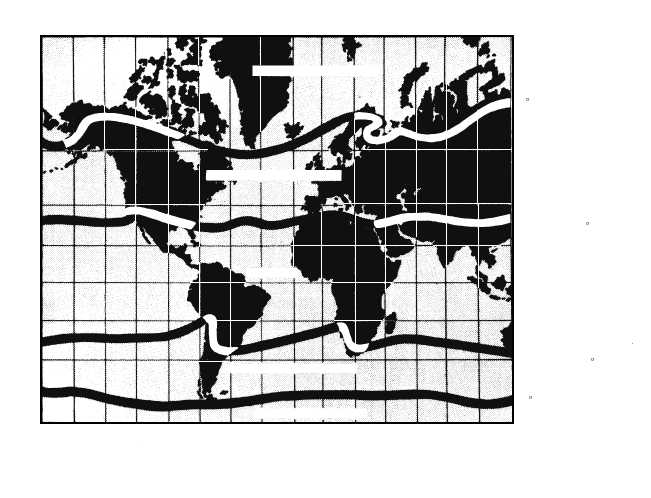Köppen’s climatic types are still considered valid
today. His climatic zones, like others, are by no means
static. Climatic zones shift with long-range weather
patterns. The most noticeable shifts in these climatic
zones have been observed over the northern portions of
North America and Asia and over Africa. Russia and
Canada, for example, have been able to conduct
farming at higher latitudes over the past 200 years due
to milder temperatures. Recent studies, however,
indicate a general return of cooler temperatures at high
latitudes, and now the growing region is gradually
moving southward again where temperatures are more
moderate. In Africa, desert regions have made notable
shifts southward due to decreasing precipitation.
Trewartha is the most recent classifier of climate.
Initially, his climatic classifications were based on
Köppen’s; however, over the years, he has made
significant
changes
and
is
now
recognized
for
developing his own six climatic groups. These six
groups are tropical, dry, subtropical, temperate, boreal,
and polar. Five of these groups are based on
temperature and one is based on precipitation (see
Table 6-2). Trewartha’s climatic groups, like Köppen’s,
are also further broken down into climatic types and
subtypes.
REVIEW QUESTIONS
Q6-9. List the five climatic belts and their
boundaries.
Q6-10. Name the three classifications of climatic
types.
Q6-11. What are the five climatic types according to
Köppen?
CLIMATIC CONTROLS
LEARNING
OBJECTIVE:
Identify
the
controlling factors that affect climate.
The variation of climatic elements from place to
place and from season to season is due to several factors
called climatic controls. The same basic factors that
cause weather in the atmosphere also determine the
6-7
NORTH POLAR ZONE
NORTH TEMPERATE ZONE
SOUTH TEMPERATE ZONE
HOT BELT
SOUTH POLAR ZONE
60
40
20
0
20
40
180
160
140
120
100
80
60
40
20
0
20
40
60
80
100
120
50
F ISOTHERM
(WARMEST MONTH)
MEAN ANNUAL
ISOTHERM OF 68 F
MEAN ANNUAL
ISOTHERM OF 68 F
50 F ISOTHERM
(WARMEST MONTH)
AGf06001
Figure 6-1.—Temperature zones.


